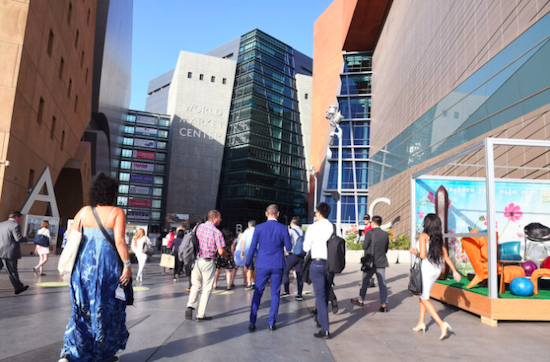Slower markets don’t have to be void of new or even slightly altered product. There are many ways to create interest and appeal for buyers making the trip to a showroom
LAS VEGAS — For most buyers, the whole purpose of attending markets is to see new product that they haven’t seen before.
For those attending the spring and fall High Point Market, it’s a given that most exhibitors will have plenty of new first-time-seen items for them to shop, providing that twice-a-year opportunity to update or change out their sales floors.
The same is true for the January Las Vegas Market, which tends to be a stronger introduction market for many companies than the summer market.

Indeed, many buyers in Las Vegas are seeing introductions from the three months prior in High Point for the first time, as data indicates that the vast majority coming to Las Vegas don’t attend the High Point Market, at least not regularly.
But there is also that group of larger retailers that attend both markets. Together, while they may make up a smaller percentage of overall attendance in Las Vegas, they are also there to see new product. Which makes serving their needs a little more challenging, particularly at a summer market.
Thus, it’s to the advantage of an exhibitor to showcase something they haven’t seen, although developing product for four markets a year is a daunting and extremely difficult task at best, as we saw during the pandemic. It’s also a challenging act to follow especially after such a strong introduction market seen this past April.
Obviously, these challenges are not new, as the industry at large has been attending four markets a year for nearly 20 years. Probably more if you count Tupelo and the former San Francisco markets.
Here are some ways that companies have managed the task in the past and can do so in the future now that product development seems to have gotten back closer to pre-pandemic levels.
+ Some companies have used product launches in Las Vegas or High Point as a way to test out an abbreviated or smaller collection. For example, they launched with an occasional or dining collection and later expanded to another category such as bedroom, or vice versa. Although some buyers might balk at not being able to buy a full collection at once, they soon had the opportunity three months later at a subsequent Las Vegas or High Point market to show the balance of the line. For Las Vegas in particular, this gave buyers at either the winter or summer markets a chance to see new categories in the collection for the first time, thus satisfying their quest for new at a market.
+ In the same manner, a company that showed a full collection at either market always has the opportunity to add a new dining table, sideboard, bed or case piece at a subsequent market. This also allows a company to add a layer of freshness with new pieces that buyers hadn’t seen previously even though they bear the same stylistic characteristics of the collection.
+ Adding a new finish or fabric is another way to add freshness to an existing piece. This could turn a bed or a sofa frame into an entirely different looking SKU. Many obviously have taken this approach over the years, but in cases where they haven’t, the new aesthetic could easily draw new customers to the fold or existing customers to something they may not recognize even if they have the original, or existing, finish on the floor.
+ And as Bob Maricich, the CEO of the newly named Andmore suggests, reshowing previously introduced product, whether seen at High Point or Las Vegas, could attract new customers that have been sitting on the fence. Presenting those buyers with hard numbers that show the item or collection is doing well at retail could easily be what closes the sale with those other buyers.
“There are lots of ways to look at it, but it all equates to the opportunity to be in front of buyers,” he said of markets in general. “I would think you would want to do that every way that you can and as often as you can.”
As we’ve said before, any company’s decision to show at market comes down to many factors ranging from the cost of exhibiting to one’s strategic focus, including geographic coverage area. In many cases, it’s also based on logistics including a West or East Coast warehouse that can serve customers in various regions of the country in a quick and efficient manner.
But all that aside, the product you have to show remains at the heart of any market. And there are many other ways other than what we’ve described here to make the mix attractive to buyers, whether it’s a special promotion, a new showroom design or even the push into a new or emerging category. With the right mix and the right message, buyers likely will respond, even during what might on the surface appear to be a slow summer market.





